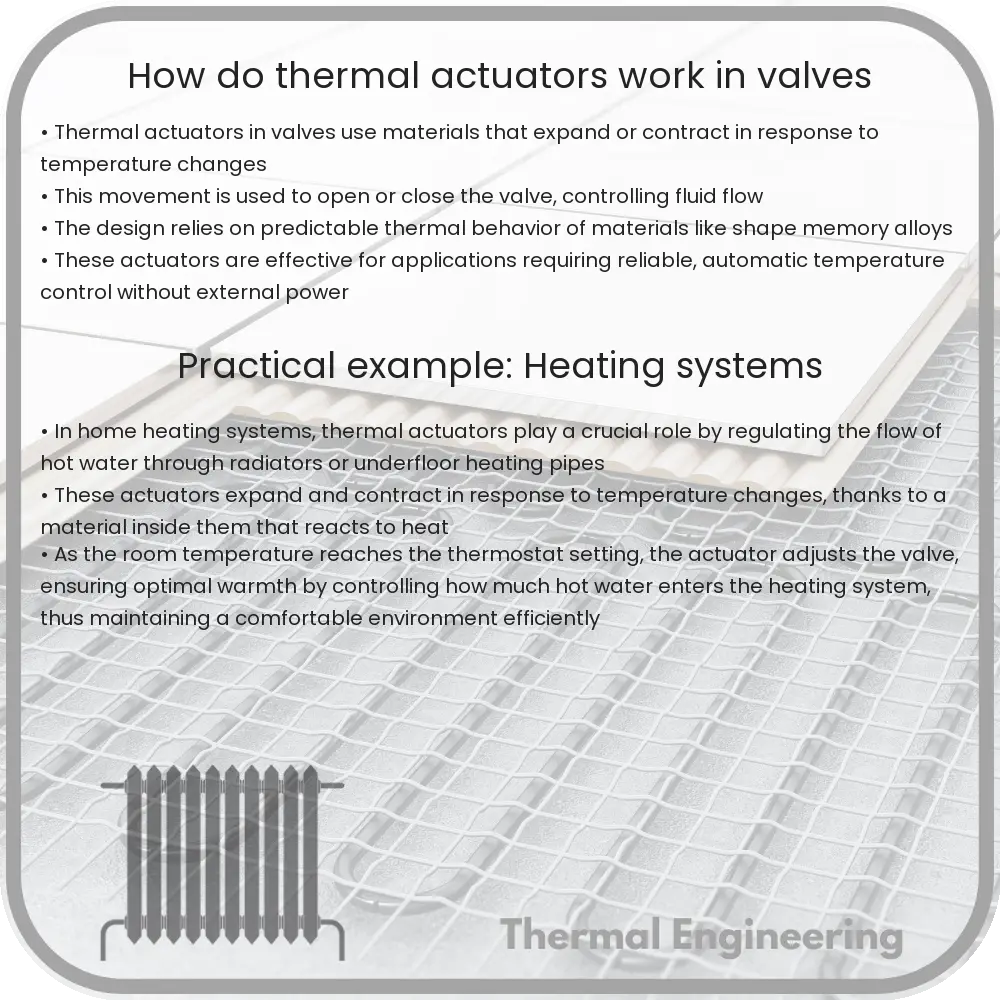Learn about thermal actuators, their working principles, types, applications, advantages, and limitations in valve operations.

Understanding Thermal Actuators in Valves
Thermal actuators are crucial components used in various engineering systems, playing a key role in controlling the operation of valves. These actuators use thermal energy to produce movement, which in turn controls the flow of liquids or gases through the valves. This article explores the basic working principle of thermal actuators, their types, applications, advantages, and limitations.
Working Principle of Thermal Actuators
The basic principle behind thermal actuators relies on the thermal expansion of materials. As materials are heated, they expand; as they cool, they contract. A thermal actuator converts this dimensional change into useful mechanical force or motion.
Specifically, a thermal actuator consists of a temperature-sensitive material and a mechanical component to convert the thermal expansion into motion. Commonly, materials such as wax or shape memory alloys are used, known respectively for their significant expansion properties and precision in returning to original shapes upon cooling.
Types of Thermal Actuators
- Wax Type: Often used in plumbing and HVAC systems, wax actuators contain a wax pellet that expands upon heating. The expansion pushes a piston or rod, thus changing the position of the valve.
- Shape Memory Alloy Type: These actuators use alloys like Nitinol, which revert to a predetermined shape when heated. This characteristic can be harnessed to actuate the valve on changing temperatures.
Applications of Thermal Actuators
Thermal actuators are widely used in applications that require reliable and automatic temperature control. Some noteworthy applications include:
- Thermostatic mixing valves in plumbing systems to control the water temperature.
- Temperature control valves in automotive radiators and spacecraft temperature regulation systems.
- Ventilation control systems in buildings for energy-efficient heating, ventilation, and air conditioning.
Advantages of Thermal Actuators
Thermal actuators offer several distinct advantages:
- Simplicity and Reliability: With fewer moving parts compared to other actuators, thermal actuators are less prone to mechanical failure.
- Energy Efficiency: They require no external power source or control signal, operating solely by the thermal input.
- Cost-Effectiveness: Typically less expensive to manufacture and maintain than other types of actuators.
Limitations of Thermal Actuators
Despite their advantages, there are some limitations:
- Slow Response: The time it takes for the material to heat up and cool down can result in slower response times compared to electrical or pneumatic actuators.
- Limited Force: The force generated by thermal actuators is generally lower, which may not be suitable for large scale or heavy-duty applications.
- Temperature Dependence: Their operation highly depends on ambient temperature, which can be a limitation in extremely cold or variable environments.
In conclusion, thermal actuators play an essential role in systems requiring automated temperature-dependent control of valves. By understanding their operation, engineers can better integrate these devices into appropriate applications, optimizing system efficiency and performance.